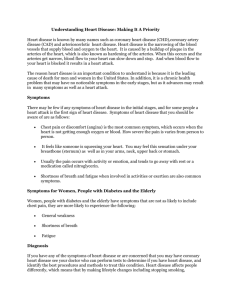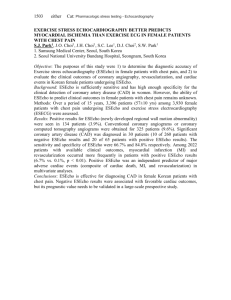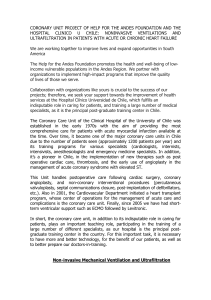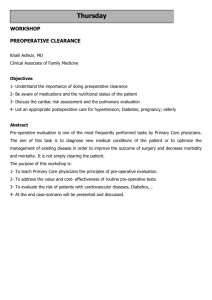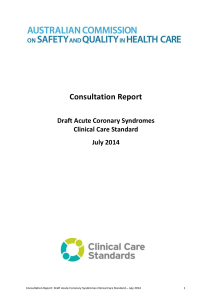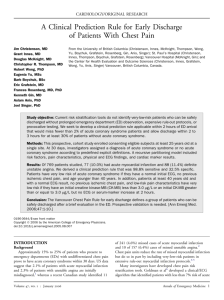Consumer fact sheet - Australian Commission on Safety and Quality
advertisement
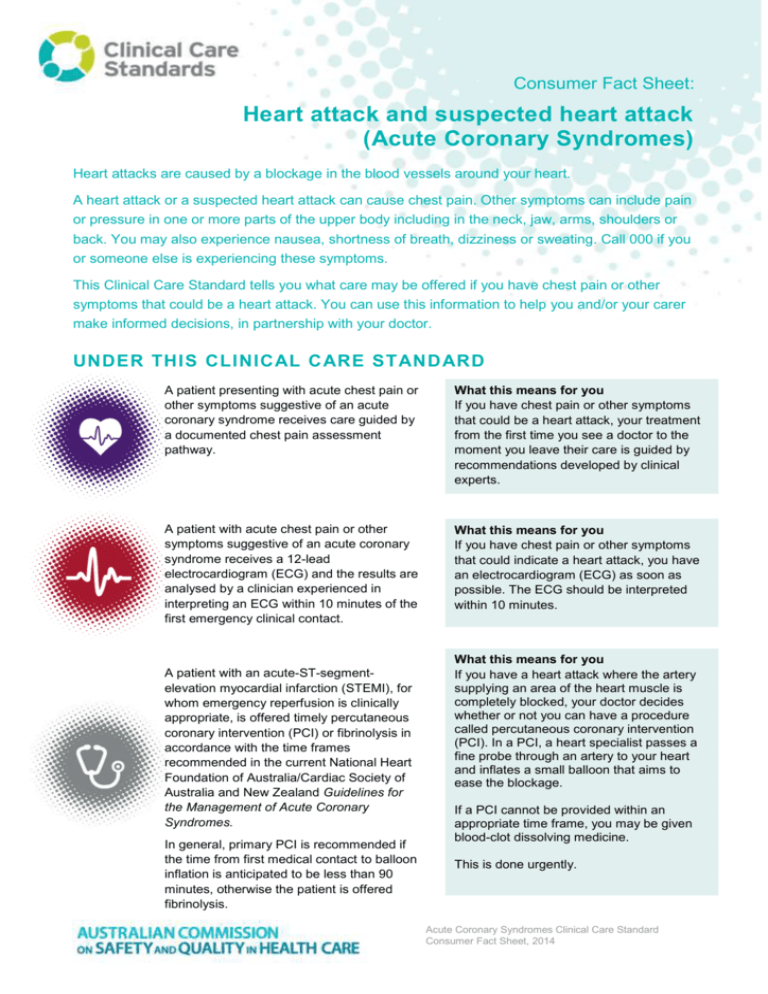
Consumer Fact Sheet: Heart attack and suspected heart attack (Acute Coronary Syndromes) Heart attacks are caused by a blockage in the blood vessels around your heart. A heart attack or a suspected heart attack can cause chest pain. Other symptoms can include pain or pressure in one or more parts of the upper body including in the neck, jaw, arms, shoulders or back. You may also experience nausea, shortness of breath, dizziness or sweating. Call 000 if you or someone else is experiencing these symptoms. This Clinical Care Standard tells you what care may be offered if you have chest pain or other symptoms that could be a heart attack. You can use this information to help you and/or your carer make informed decisions, in partnership with your doctor. UNDER THIS CLINICAL CARE STANDARD A patient presenting with acute chest pain or other symptoms suggestive of an acute coronary syndrome receives care guided by a documented chest pain assessment pathway. What this means for you If you have chest pain or other symptoms that could be a heart attack, your treatment from the first time you see a doctor to the moment you leave their care is guided by recommendations developed by clinical experts. A patient with acute chest pain or other symptoms suggestive of an acute coronary syndrome receives a 12-lead electrocardiogram (ECG) and the results are analysed by a clinician experienced in interpreting an ECG within 10 minutes of the first emergency clinical contact. What this means for you If you have chest pain or other symptoms that could indicate a heart attack, you have an electrocardiogram (ECG) as soon as possible. The ECG should be interpreted within 10 minutes. A patient with an acute-ST-segmentelevation myocardial infarction (STEMI), for whom emergency reperfusion is clinically appropriate, is offered timely percutaneous coronary intervention (PCI) or fibrinolysis in accordance with the time frames recommended in the current National Heart Foundation of Australia/Cardiac Society of Australia and New Zealand Guidelines for the Management of Acute Coronary Syndromes. In general, primary PCI is recommended if the time from first medical contact to balloon inflation is anticipated to be less than 90 minutes, otherwise the patient is offered fibrinolysis. What this means for you If you have a heart attack where the artery supplying an area of the heart muscle is completely blocked, your doctor decides whether or not you can have a procedure called percutaneous coronary intervention (PCI). In a PCI, a heart specialist passes a fine probe through an artery to your heart and inflates a small balloon that aims to ease the blockage. If a PCI cannot be provided within an appropriate time frame, you may be given blood-clot dissolving medicine. This is done urgently. Acute Coronary Syndromes Clinical Care Standard Consumer Fact Sheet, 2014 A patient with a non-ST-segment-elevation acute coronary syndrome (NSTEACS) is managed based on a documented, evidenced-based assessment of their risk of an adverse event. The role of coronary angiography, with a view to timely and appropriate coronary revascularisation, is discussed with a patient with a non-ST-segment-elevation acute coronary syndrome (NSTEACS) who is assessed to be at intermediate or high risk of an adverse cardiac event. What this means for you If you have a heart attack where the artery supplying an area of the heart muscle is partly but not fully blocked, your treatment will depend on your risk of having a serious heart problem in the future. What this means for you If you have a heart attack where the artery supplying an area of the heart muscle is partly but not fully blocked, your doctor works out your risk of having a serious heart problem in the future. If that risk is medium or high, your doctor talks to you about whether or not you should have a procedure called coronary angiography. In coronary angiography, a specialist passes a fine probe through an artery to your heart, then releases a dye which shows up on X-rays. In this way, your doctors know which arteries are blocked, and how much they are blocked. Then they talk to you about whether it is possible to unblock them, and how best to do so. Before a patient with an acute coronary syndrome leaves the hospital, they are involved in the development of an individualised care plan. This plan identifies the lifestyle modifications and medicines needed to manage their risk factors, addresses their psychosocial needs and includes a referral to an appropriate cardiac rehabilitation or another secondary prevention program. This plan is provided to the patient and their general practitioner or ongoing clinical provider within 48 hours of discharge. What this means for you Before you leave the hospital, your doctors and nurses discuss your recovery with you. They help develop a plan with you which sets out: what changes you may need to make to your lifestyle what medicines you may need to take what rehabilitation clinic or prevention service you are referred to. You and your regular general practitioner get a copy of this plan within two days after you leave hospital. More information on the Clinical Care Standards program is available from the Australian Commission on Safety and Quality in Health Care website at www.safetyandquality.gov.au/ccs. Acute Coronary Syndromes Clinical Care Standard Consumer Fact Sheet, 2014





